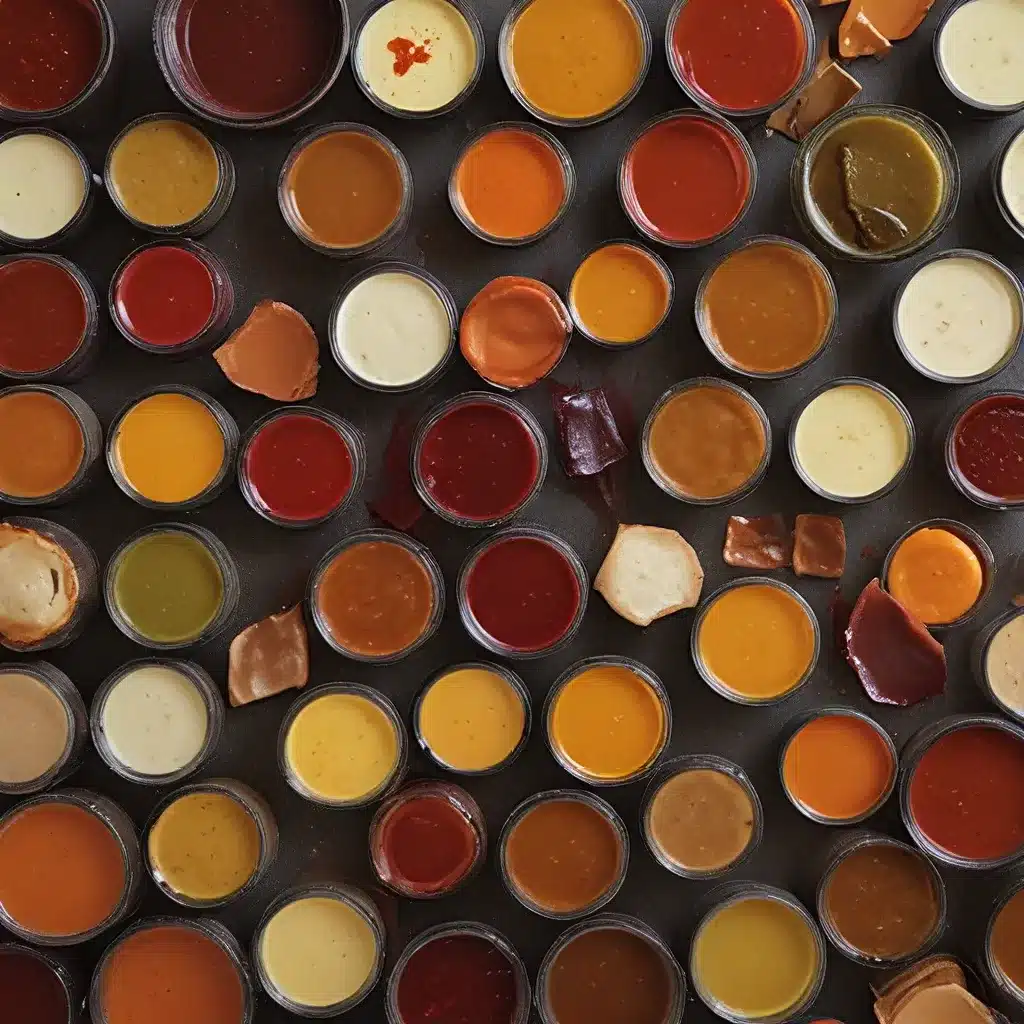
As a self-proclaimed “sauce enthusiast,” I’ve spent countless hours experimenting in the kitchen, trying to unlock the secrets of creating truly mouthwatering, restaurant-quality sauces. And let me tell you, it’s been a delicious journey full of successes and, well, let’s just say “learning experiences.”
One thing I’ve come to realize is that the foundation of any great sauce lies in understanding the four key building blocks of flavor: salt, acidity, richness, and aromatics. Nail these elements, and you can transform even the most humble of dishes into something truly crave-worthy.
Mastering the Salt Balance
Let’s start with the most fundamental of the four: salt. Now, I know what you’re thinking – “Salt? Really? That’s it?” But trust me, getting the salt level just right can make all the difference in the world.
As Meredith Antunez explains, “It is amazing how much more you taste the food itself when it is seasoned properly. The carrots taste more carrot-y, tomatoes taste more like tomatoes, and so on.” And she’s absolutely right. When a dish is under-salted, it can taste flat and one-dimensional. But go overboard, and you risk drowning out all the other flavors.
That’s why I recommend adding salt in small increments as you cook, tasting as you go. That way, you can fine-tune the seasoning and really let the other ingredients shine. And don’t be afraid to get a little creative – salt isn’t just for savory dishes. Meredith even suggests salting melons, which really brings out their natural sweetness.
Balancing Acidity for Brightness
Next up is acidity, which is all about adding that essential “zing” to your sauces. As Meredith puts it, “When a dish tastes flat, heavy, or one-note, it’s time to bring out the acid.”
Lemons, limes, and a whole range of vinegars are the key players here. Each type of vinegar – balsamic, red wine, champagne, etc. – has its own unique flavor profile that can complement different types of dishes. A drizzle of acid at the end of cooking can really make your sauces pop, cutting through richness and providing a refreshing counterpoint.
But it’s all about finding the right balance. Too much acidity can be just as problematic as not enough. That’s why I always recommend tasting as you go and making adjustments accordingly. The goal is to achieve that perfect harmony where your taste buds are left wanting more.
Introducing Richness and Body
Alright, now let’s talk about richness. This is where you bring in the big guns – butter, heavy cream, olive oil, Parmesan cheese, even a thickening agent like a roux or cornstarch slurry. These ingredients add that luxurious, velvety mouthfeel that takes a sauce from “nice” to “oh, wow!”
As Meredith explains, richness “rounds out a dish, adding texture and mouthfeel and generally making it feel balanced and luscious.” And let’s be real, who doesn’t love a little decadence in their lives?
The key here is to use these rich elements judiciously. You don’t want to overpower the other flavors, but rather create a harmonious blend that leaves your taste buds utterly satisfied. It’s all about finding that perfect equilibrium.
Elevating with Aromatic Wonders
The final piece of the puzzle is aromatics – the fragrant herbs, spices, onions, and garlic that lend their distinctive flavors to our sauces. Meredith notes that these ingredients are often used at the beginning of cooking to build a solid foundation, while fresh herbs are added at the end to provide a final burst of freshness.
But don’t underestimate the power of aromatic spices like red chili flakes, cumin, or dried oregano. These can be added even in the final moments of cooking to give your sauces that extra “oomph” and transform them from good to great.
It’s all about playing with layers of flavor, allowing each ingredient to shine while also creating a harmonious whole. And the beauty of it is, you can endlessly experiment and find new combinations that delight your taste buds.
Putting It All Together
Now that we’ve explored the four key building blocks of flavor, it’s time to put them into practice. Whether you’re creating a simple vinaigrette or a complex béchamel sauce, mastering these principles will take your sauces to new heights.
Start by tasting your sauce at every stage of the cooking process. Is it lacking in salt? Add a pinch or two and see how it changes the overall flavor profile. Is it feeling a bit heavy or one-note? Introduce a splash of acid to brighten things up. Need a bit more oomph? Bring in some aromatic spices or fresh herbs.
It’s all about being attentive, making adjustments, and trusting your taste buds. And don’t be afraid to experiment – that’s where the real magic happens! With a little practice and a lot of delicious sampling, you’ll be well on your way to sauce mastery.
So, what are you waiting for? Grab your whisk and let’s get saucy!

